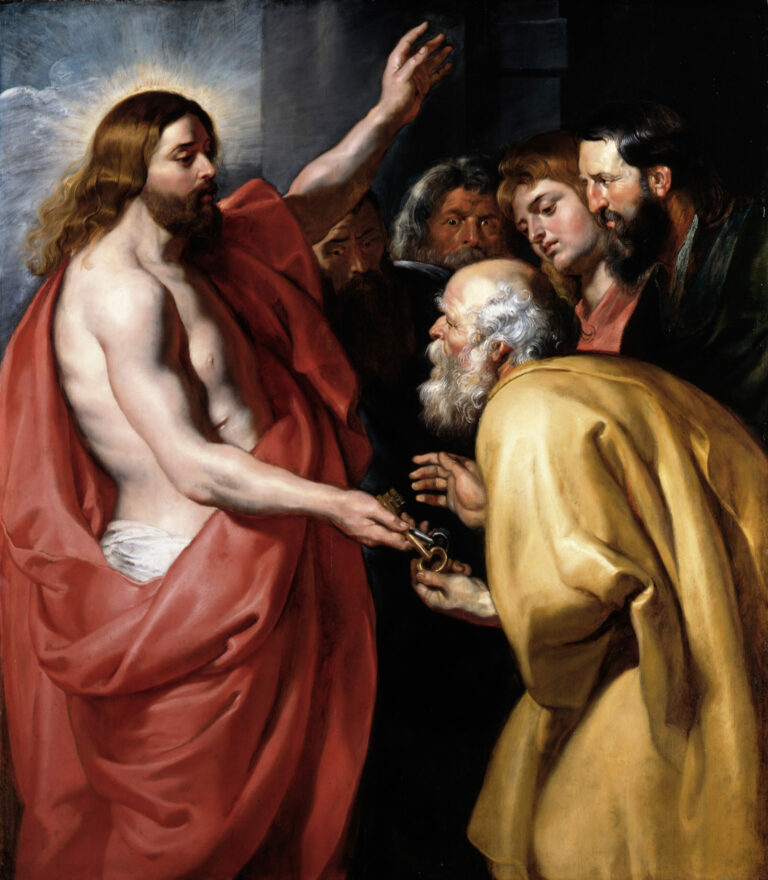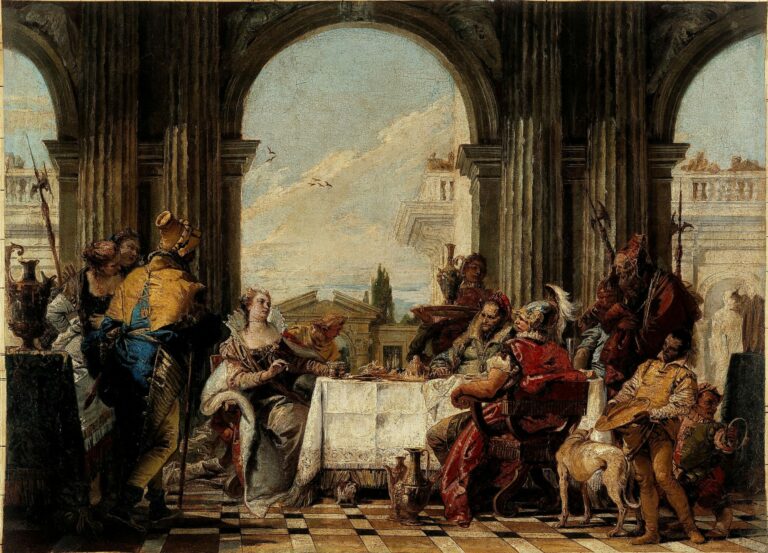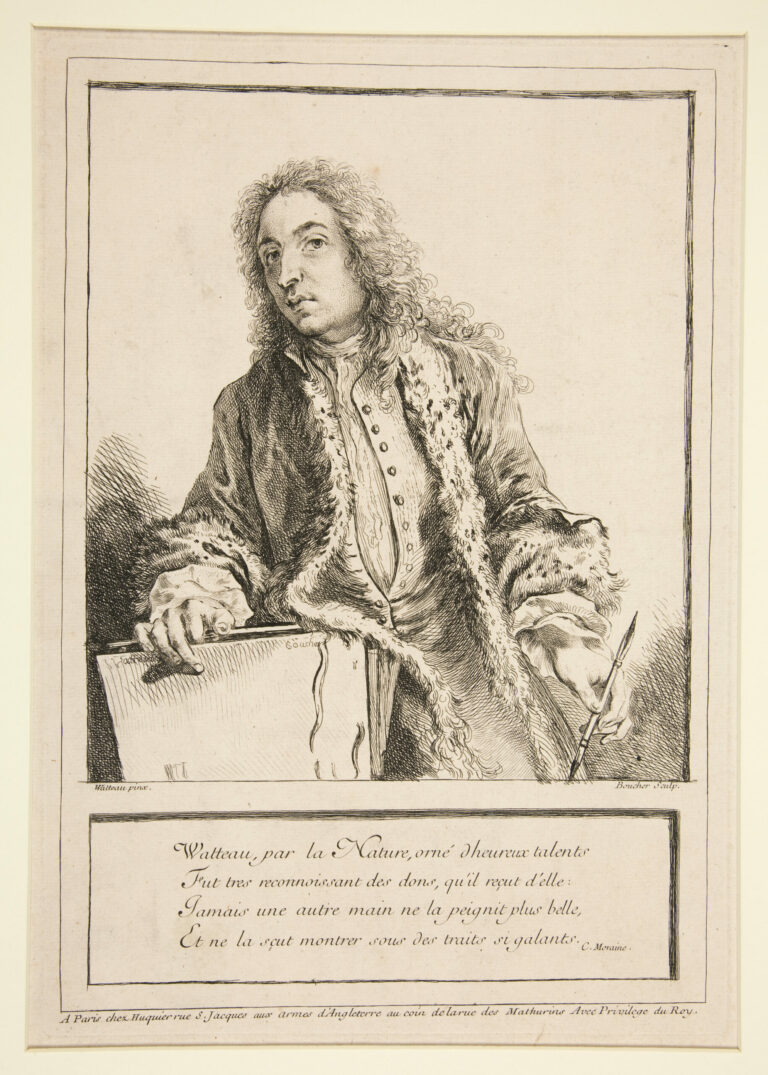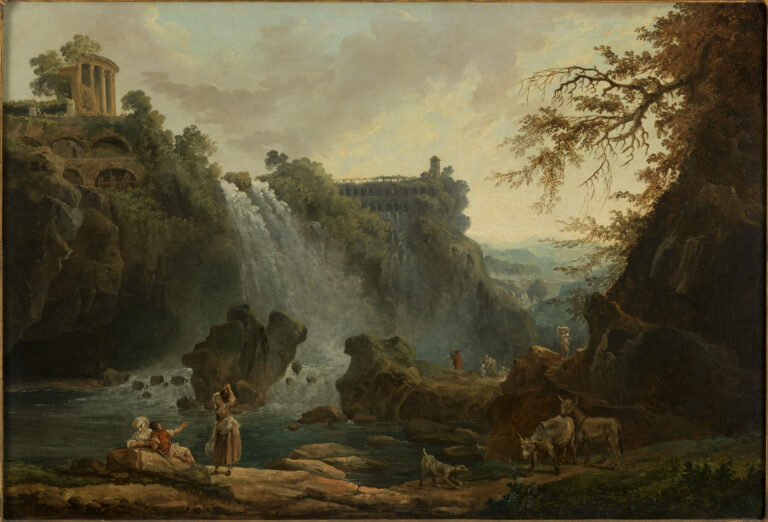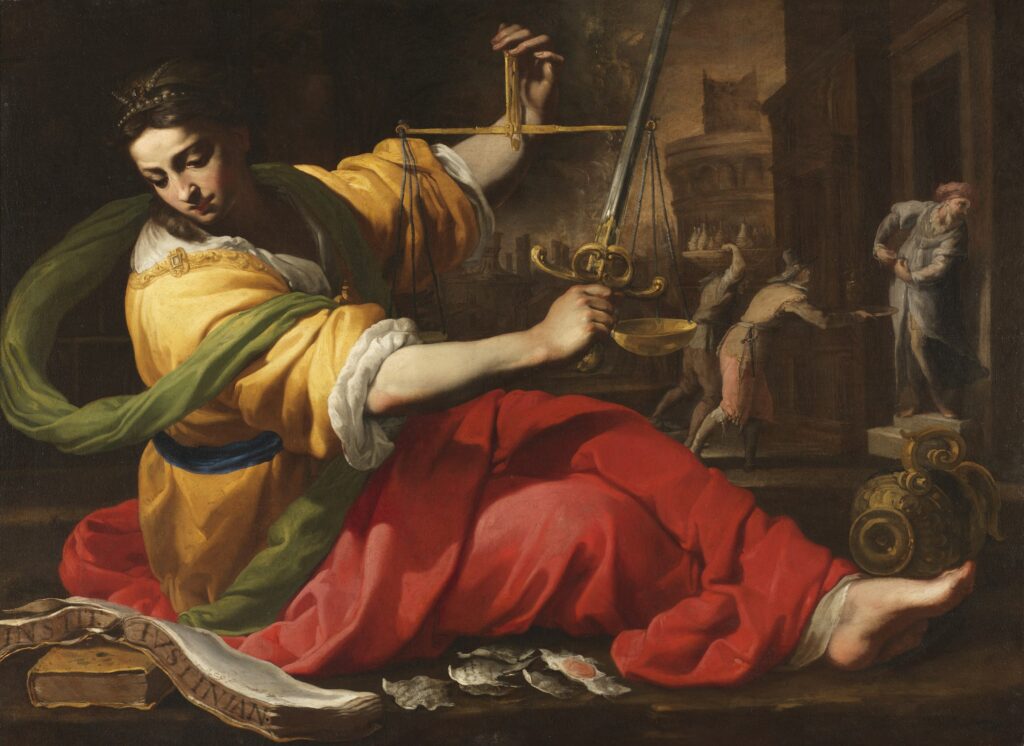
This baroque allegory by Bernardino Mei displays refined symbolism in a style characteristic of the 17th century.
The central female figure personifies Justice, recognizable by her traditional attributes: the scales and sword, respective symbols of equity and the power of sanctions. Her noble posture and determined gaze express the firmness of judgment. The rich draperies in vivid colors—cardinal red, golden yellow, and emerald green—attest to the majesty of this cardinal virtue. This theatrical composition, bathed in striking chiaroscuro, perfectly illustrates the art of the Counter-Reformation, which favored emotional impact to convey moral values.
Further Information
- Allegory of Justice, by Bernardino Mei in 1656, photo Cecilia Heisser/Nationalmuseum
- 114.5 x 156 cm
- Nationalmuseum, Stockholm, displayed in room 1621, 17th century
- https://collection.nationalmuseum.se/en/collection/item/176296/
Bernardino Mei (1612-1676), born in Siena, first trained in drawing under Giuliano Periccioli, then in painting under Rutilio Manetti and probably Francesco Rustici, though his masters remain uncertain according to sources. After working in his native city, he was summoned to Rome in 1657 by Pope Alexander VII (Cardinal Fabio Chigi), where he came under the decisive influence of Gian Lorenzo Bernini, with whom he maintained a deep friendship. This relationship allowed him to assimilate the art of “living sculpture” and baroque scenographic effect, which he translated into his mythological and allegorical paintings. Although long considered merely an imitator of masters (Veronese, the Carracci, Guercino)—to the point that one of his frescoes was attributed to Guercino until the 19th century—his work has been recently reevaluated. Versatile, he worked for the Sienese and Roman courts of the Chigi, as well as for the Piccolomini, demonstrating his mastery of diverse techniques, from large-format decoration to miniature.

